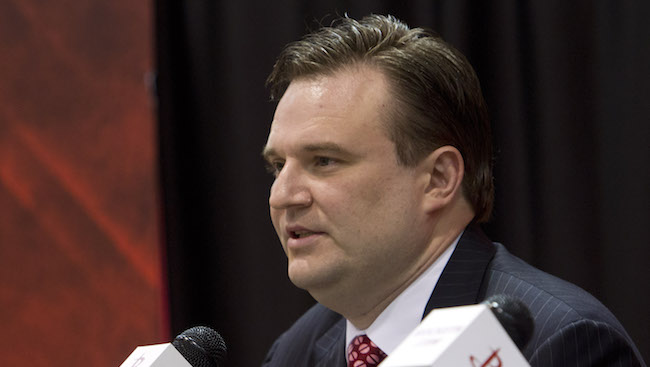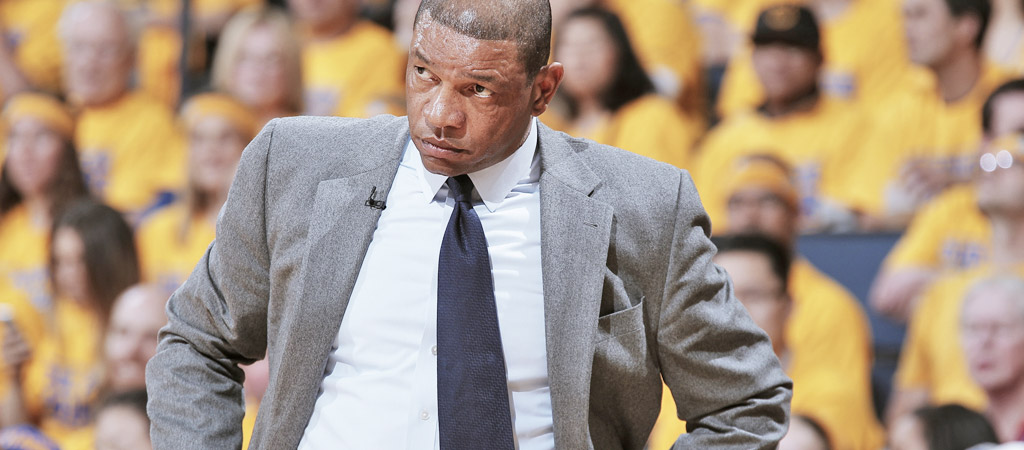In something that has been said a million times when discussing the Philadelphia 76ers, there are three ways to acquire talent in the NBA. The first is for a team to absolutely nail the Draft and stockpile the kinds of young players who are capable of being franchise cornerstones for more than a decade. The second is for a team to use cap space to reel in big-money free agents and accelerate their timetable for success. The third is to have a treasure trove of assets to turn into superstars in trades, giving an organization a way to blast through whatever ceiling they might have at a given time.
This gets talked about with regards to the Sixers because they had all three of these things, and the discourse around them oftentimes centers around how it was all bungled. At one point, ahead of the 2017 NBA Draft, Philadelphia had picks, cap space, and two young pillars in Joel Embiid and Ben Simmons. It would have taken breathtaking mismanagement for things to have gone off the rails, and wouldn’t you know it, that’s exactly what happened.
In the blink of an eye, the Sixers went from a team with a seemingly endless amount of tradable assets and gobs of cap space to the cautionary tale of what happens when you cannot get out of your own way. Even if things made sense in a vacuum — trading up to take Markelle Fultz made sense at the time, getting a promising player in Zhaire Smith and a future unprotected first for Mikal Bridges did too (albeit not quite as much), going all-in for Jimmy Butler and Tobias Harris in a year when the Eastern Conference was there to be won would have looked awfully different if not for a Kawhi Leonard miracle shot, etc. — they ended up being good short-term decisions that, in the aggregate, put a hard ceiling on them in the long-term.
Now, Philadelphia is in the midst of a gigantic overhaul as they look to lift that ceiling in whatever way they can. Embiid and Simmons are still there, but the team around them meant that the squad failed to live up to expectations this season. Even before Simmons got injured and missed effectively all of the NBA’s Orlando Bubble, the Sixers felt like a team that was its own worst enemy. The flashes of brilliance were often followed up by injuries and issues related to poor fits — it seemed like a fun experiment at the time, but in retrospect, handing a gigantic contract to a really good player in Al Horford when they had Embiid is kind of baffling. Same with Harris, who is another really good player but didn’t consistently play up to the standard of which he’s capable and is a clunky fit at the four when the team already has Simmons.
Ultimately, the Sixers opted to fix the things they could fix right away. They fired Brett Brown and replaced him with the experience of Doc Rivers. Then, reports from earlier this week indicated that they will bring in Daryl Morey, immediately giving their front office a boost in the form of a respected executive who is willing to do whatever it takes to win, even if it means getting creative. If there is anyone who can figure out a way to get the team out of the mess in which it finds itself, it is Morey, and while Rivers has shown flaws as a coach, he is building out a staff that can compensate for those as he focuses on managing a locker room that never seemed cohesive in 2020.
Whether or not this all works out remains to be seen. Philly’s cap sheet mess is well known, but they still have some assets to work with should Morey want to explore big shakeups immediately — interesting young players like Matisse Thybulle and Shake Milton, plenty of second-round picks and the Nets’ first-round selection this year — but the team still has an uphill battle ahead of it. At the very least, Morey and Rivers give them two things they did not previously have: Experienced NBA decision-makers who know what to do with talent and how to make it all fit.

Explaining how Rivers and his staff — which will include respected names like Sam Cassell, David Joerger, and longtime Pacers assistant Dan Burke — fits into this equation is easy enough. While Brown did a good job at the helm, Philly needed a new set of eyes to look at things. Rivers and Joerger both have gobs of head coaching experience, Cassell could be a head coach in the league right now, and Burke is one of the best assistants in the NBA, particularly when it comes to coaching up a defense. Rivers may not be a perfect coach, but he’s assembling one of the best and deepest staffs in the league. On top of all of that, if Harris is going to be a core piece of what they do moving forward (and that’s up to Morey), they brought in the coach under whom he had the best season of his career.
Morey is the much bigger piece to this puzzle. A coach can do fantastic things, but they also need to have pieces that can work together — handing Gordon Ramsay a funky Chopped basket could work, but it would not be anywhere near as good as handing him ingredients that make sense with one another. Morey, for everything that can be said about his unshakable belief in numbers that never manifested themselves in a championship in Houston, is perhaps the single most willing executive in basketball to leave absolutely zero stone unturned.
The numbers were, generally, the things that defined Morey with the Rockets. Whether it was building a team that eschewed midrange jumpers altogether, or jettisoned all their big men, or let James Harden and Chris Paul iso guys to death, if you ask 100 NBA fans about what they’ll recall about those Houston teams, it will probably be that they were at the forefront of Mathball™. In addition to that, though, was the fact that Morey believed, at the end of the day, in the importance of stars. Even if they did not always land them, the Rockets at the very least seemed to do their due diligence whenever someone would hit the market — it’s how they got Harden, it’s how they got Paul, and while ESPN’s Tim MacMahon reported this was not his preferred course of action, it is how they got Russell Westbrook.
Philadelphia has stars. For all the concerns about their fit with one another, Embiid and Simmons are stars. It seems safe to assume that every decision Morey will make will be done through the lens of maximizing what they can and cannot do — and if he decides to break up that pairing somewhere down the line, Morey isn’t someone who will sell for pennies on the dollar just to get a deal done. This does not mean that either will be asked to chuck threes, but it would be sensible that skills like shooting and playmaking would be paramount in all the roster decisions they make. Same with, say, the ability to defend guards and fly around on the perimeter with the knowledge that Embiid is patrolling the paint.
Morey’s also willing to give up whatever it takes outside of his pillars to maximize their success. This has its obvious flaws — the Rockets’ future in the Draft is, for lack of a better word, bleak, and they have a whole lot of money tied up in four guys going forward, the youngest of whom is soon-to-be 30-year-old Robert Covington. The bad news for the Sixers is their cap situation is the toughest in the league, but the window will theoretically be open a little longer with a 26-year-old and a 24-year-old as its main players. In the meantime, he will work the phones along with general manager Elton Brand to figure something out around them. Having Morey and Rivers means you believe your window is right now, and both will presumably operate with the requisite urgency that comes from this declaration.
The Sixers’ wager for years has been that having talent is the single-most important think they could do in pursuit of a title. That was a correct assessment, but it missed an important element: Talent does not work harmoniously solely because it exists. It needs to operate within the right infrastructure, one that makes all the pieces fit with one another to make the sum of the parts exceed even the most impressive bunch of individuals. There is no guarantee this version of the Philadelphia 76ers’ works, but in Rivers, his staff, and Morey, they finally have people who understand how to make that happen.







